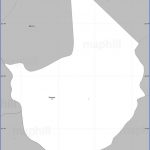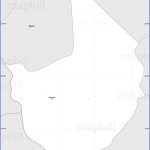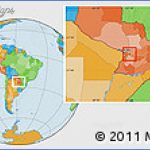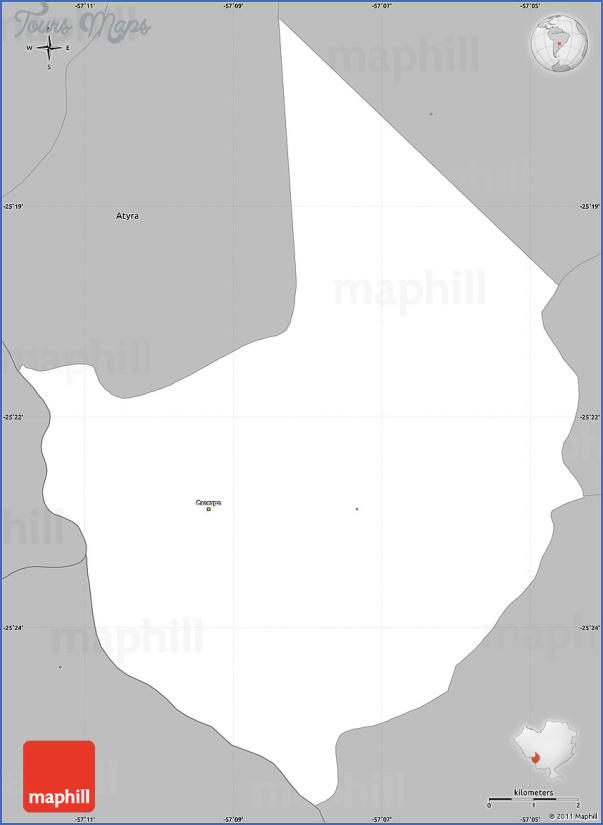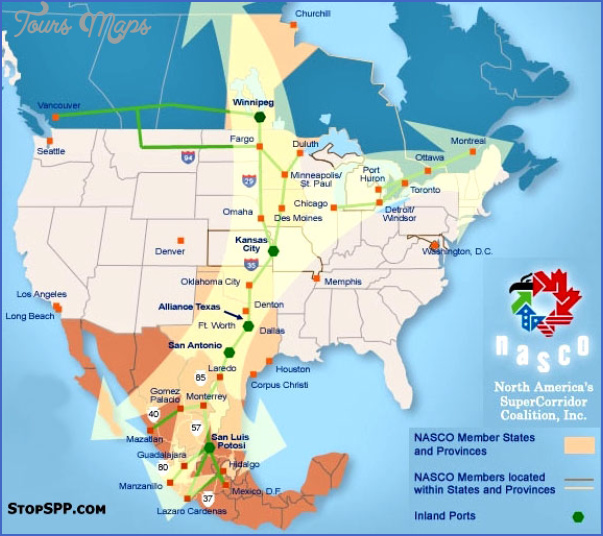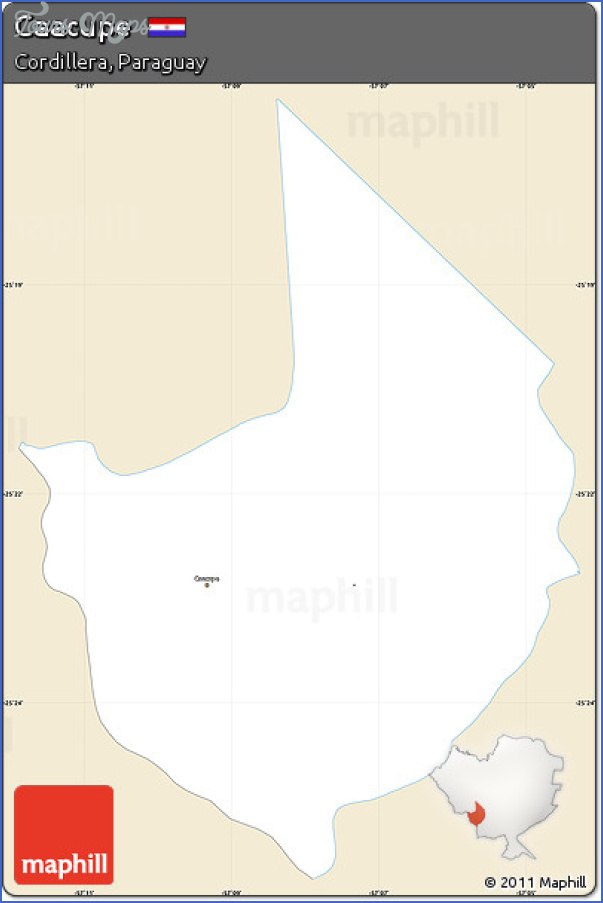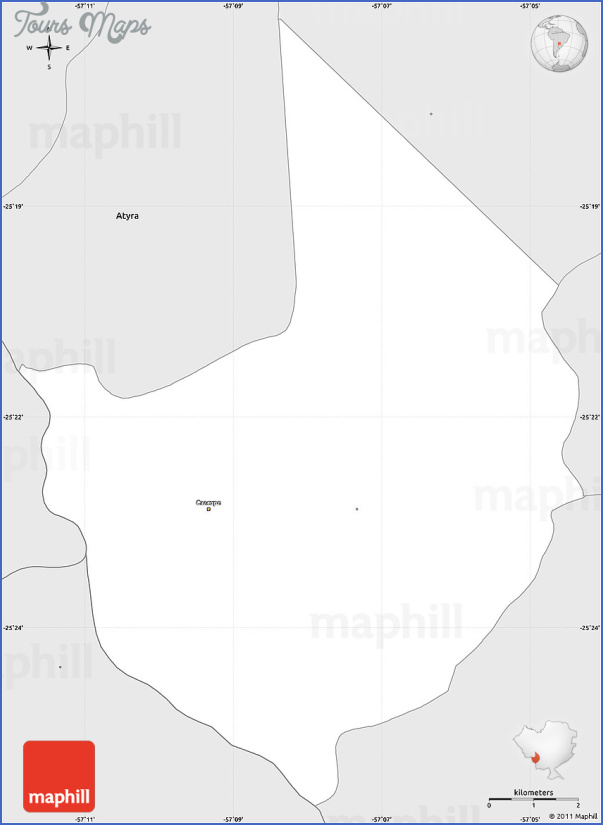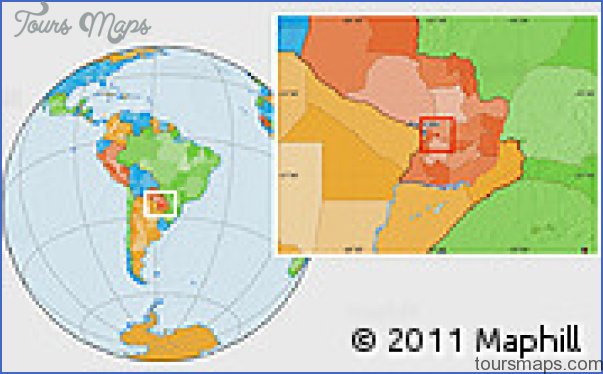Caacupe is known as the Spiritual Capital of Paraguay. The Dia de la Virgen de Caacupe, celebrated on December 8th, is one of the most important religious holidays in the nation. Each year over one sixth of the nation makes its way to Caacupe in an impressive display of religious devotion reminiscent of The Canterbury Tales. However Caacupe draws visitors year round. Many come to visit the basilica which houses the Virgen de Caacupe and is much less crowded outside of the month of December. The city is a meeting point for the European expats who have moved to the surrounding areas in droves – there are a handful of restaurants and stores that cater to the tastes of this European community. From Caacupe, you will also find the turn offs to Atyra (thirteen kilometers away) and Tobati (six kilometers away), both known for their handicrafts and beautiful landscapes. Caacupe is a good place to stop and eat before continuing on to Tobati which has limited tourism facilities.
Sidebar: Caacupe’s name comes from the guarani phrase Ka’aguy kupe which means behind the forest.
Santuario Virgen de los Milagros de Caacupe
Commonly referred to as la Basilica, this imposing church on the main plaza has housed the statue of the Virgen de Caacupe since 1980. Given the fervor she inspires, it is surprising to see how small the statue of the virgin actually is. Climb to the mirador (lookout point) at the top, and stop along the way to take in the murals depicting the legend of the Virgen de Caacupe (see Legend of the Virgen de Caacupe). Aside from visiting the Santuario/Basilica, many pilgrims also visit the nearby
Pozo de la Virgen or Tupasy Ykua, a spring whose water is considered holy. Tel: 0511 244 732, Eligio Ayala between Dr. Pino and Juan E. Oleary, www.santuariovirgendecaacupe.com, Mon-Sat 7am-11:15am, 2pm-4:45pm, Sun 8am-2:45pm The Pilgrimage to Caacupe
In this deeply religious country it is common for people to ask particular saints for protection and guidance. A pilgrimage to the hometown of your patron saint, especially on the saint’s given feast day (as dictated by the Calendar of Saints), is an offering of gratitude. The Virgen de Caacupe inspires a particular devotion in Paraguayans, drawing well over one-million devotees from this nation of six-million to her hometown every year.
Although people can be seen walking to Caacupe throughout the year, the vast majority make the trek in the days leading up to December 8th. At a distance of fifty-four kilometers, the walk from Asuncion usually takes a full day and is longer than a marathon. Pilgrims voyaging from further afield often walk for several days. A popular alternative for those short on time or energy is to take a bus, car, or, as used to be common, an ox-cart to a nearby town such as Ypacaraf, seventeen kilometers away, and finish the pilgrimage on foot.
Many Paraguayans walk to Caacupe at least once in their life. Some choose to make a lifelong commitment to the Virgin, returning year after year. Many even make the journey from abroad. Pilgrims of all ages make the trip: from babies in their parents’ arms, to the elderly escorted in wheelchairs by family members. People rarely walk alone. Most choose to share the experience with family and friends. As a foreigner, it is easy to find companions for the pilgrimage; every Paraguayan knows at least one person making the trip every year and most are happy to share the experience with foreign visitors.
The journey can demand a fair sacrifice from pilgrims. Some years it seems the Virgin takes pity on her followers by providing cool weather and cloudy skies. More often than not, however, walkers face blazing hot summer days when the asphalt underfoot feels like a miles-long griddle. Although walking is more comfortable at night, extra care must be taken in the dark. The main access road to Caacupe, Route 2, is a heavily transited national highway, too important to shut down for the pilgrimage. Police are on hand to keep traffic from getting too close to the shoulder but even nonbelievers may find themselves praying to the Virgin as trucks barrel past.
Many of the faithful choose to show their gratitude to the Virgin not by walking but by assisting fellow pilgrims. The road to Caacupe is lined with tents providing all types of services. Religious groups and neighborhood commissions hand out pieces of bread spread with dulce de guayaba (guava jam) and serve water or juice. Since most walk in rubber flip flops, tents providing foot and back massages are particularly popular, as are the first aid tents. Those who find their bodies willing but spirits flagging receive encouragement from youth groups who perform songs and cheer them on.
The path to Caacupe is not without temptation. With their by-the-quarter-hour pricing structure, suggestively named motels such as Motel Carpe Diem and Motel Love Toys may tempt even the most devout walkers to stray from the path. There is a saying about couples walking to Caacupe together: Fueron entre dos, y volvieron entre tres (they went as two and returned as three), so clearly the motels are able to drum up business even in the holiest of times. Tempting other weaknesses, homeowners along the route turn their front lawns into impromptu restaurants, enticing pilgrims with grilled meats and cold beer.
Every pilgrim is a potential customer, and the throngs of people present a golden opportunity for enterprising vendors. Upon arriving in Caacupe one is thrust into a religious street-fair complete with skill games, a Ferris wheel, and stands selling everything from the sacred to the mundane. Virgen de
Caacupe themed statuettes, jewelry, and t-shirts are hawked alongside sodas, shoes, and cell phones.
As the Dia de la Virgen de Caacupe approaches, the trickle of pilgrims gives way to a full-scale river of people flowing into the city from all directions. Everyone makes their way to the main square in front of the Basilica de Caacupe to stake out a spot. The plaza and surrounding areas are literally carpeted with people. Every surface is occupied by pilgrims, some resting, others talking and praying. In fact, the term funcion Caacupe is Paraguayan slang for a crowded event. Hourly masses are broadcast over loudspeakers throughout the night of December 7th and continue on through the following morning. Paraguay’s heart and soul are on display during the pilgrimage. Participating in the Dia de la Virgen de Caacupe is more than just a religious procession. The bond created between fellow pilgrims in conversation while walking or stopping for food is unforgettable. Walking to Caacupe can be a fun, if at times overwhelming, experience.
Tips for Walking to Caacupe
Seeing as the massive countrywide pilgrimage to Caacupe takes place along the side of a highway at the beginning of the Paraguayan summer certain precautions should be taken:
– Watch where you’re going. The walk takes place on the side of the road – either on uneven footpaths or on the road’s shoulder which has raised rumble strips that are easy to trip on, especially at night. Despite police presence some vehicles come too close for comfort so try to keep your distance from the road.
– Wear proper shoes: It’s a long walk. Don’t do it in flip flops (unless you are paying penance).
– Bring water or make sure to drink water offered along the way.
– Avoid the hottest hours of the day. With the hot sun above and the hot asphalt underfoot walking to Caacupe during the daytime is a brutal affair. Plenty of people walk at night when it is calmer and cooler.
– Choose an alternate walking date. Walking to Caacupe still counts even if you don’t do it on the 7th and 8th. In fact, many choose to walk throughout the week leading up to the 8th. The crowds are smaller and the experience is less intense… that can be a good thing!
Lodging
Lodging in Caacupe can get very crowded during early December in anticipation of the pilgrimage. If you would like to be there for the big day book extra early and consider staying in lodging further from town and arranging for transportation (although streets will be very crowded). Aside from visiting the Basilica there is not much to do in Caacupe itself – people interested in taking advantage the area’s natural surroundings will do best to stay in one of the estancias and campgrounds located on the outskirts of Caacupe.
As a result of the combination of Caacupe’s natural surroundings and religious importance there are several establishments geared towards hosting religious retreats. Their facilities often include basic dorm rooms, campgrounds, and kitchens. Though they tend to focus on large groups some establishments are able to accommodate campers. Be aware that their religious nature may mean alcohol is not permitted on the premises. In addition expect dorms and kitchens to be minimally stocked as groups usually bring everything from sheets and towels to cook wear.
Zum Thuringer A hotel and restaurant that caters mostly to German immigrants. It is located about four kilometers from Caacupe but as it is on the main road buses in to town can be caught easily. Rooms are simple but clean. Restaurant serves up classic German dishes like bratwurst and eisbein, has nice ambience and a pool table. Owners can arrange excursions and offers car rentals. Tel: 0511 242 508, 0981 480 923, Rt 2 km 51.5, www.paraguay-pension.com, Single Gs. 100,000, Double (accommodates up to 4 people ) Gs. 200,000, Wi-Fi, TV, A/C, pool. Restaurant hours: Wed-Sun 11:30-4pm, 7pm-12am, Gs. 25,000-35,000
Hotel Katy Maria Very centrally located. Rooms have balconies looking out over the Basilica. Tel: 0511 242 860, Corner of Eligio Ayala and Dr. Pino, Gs. 150,000 per person, TV, A/C, mini-fridge
Asuncion Hotel Located behind the Basilica this retro looking mustard yellow and orange hotel is the nicest in town. Rooms are large if a little sparsely decorated. Of the hotels in town this one has the benefit of not being located on the main road (however this doesn’t make much of a difference during early December when the entire area is a crazy mess). Tel: 0511 243 771, Avenida 8 de Diciembre and Juan E’ Oleary, www.asuncionhotel.com.py/, Gs. Gs. 100,000 per person, Wi-Fi, TV, A/C, mini-fridge
Hotel Virgen Serrana A basic hotel across the street from the Basilica. The first floor has a large store selling handicrafts and an enormous variety of religious items – from large statuettes to rosaries and everything in between. Even if you don’t stay at the hotel it is worth visiting this santeria to see the various religious paraphernalia that accompany this town’s religious fervor. Rooms on the bottom floor are cheaper while rooms on the top floor are much nicer. Tel: 0511 24 23 66, www.hotelvirgenserrana.turismoparaguay.net, Ground floor Gs. 70,000 per person, top floor Gs. 150,000 per person, TV, A/C
Restaurants
El Cucurucho The only place serving up pecan pie in all of Paraguay, Cucurucho (Spanish for ice cream cone) is a must stop for anyone with a sweet tooth traveling down Route 2. Cucurucho specializes in American style desserts including cookies, pies and muffins. There are burgers and fries as well. The pinguino, (penguin) a chocolate muffin smothered in soft serve ice cream and chocolate syrup is a glutton’s delight. Tel: 0984 201 545, Route 2 km 44.5 on the left-hand side of the road when coming from Asuncion and marked by a five foot tall ice cream cone shaped sign that is visible from the road. Mon-Thu 9am-8:30pm, Fri-Sat 9am-11pm, Sun 9am-8pm, Gs. 5,000-15,000
Restaurant Chiky One block from the Basilica, this bright yellow restaurant is a popular hangout for the area’s expat community. Breakfast spreads include eggs, sausages, juice, fresh bread, and jams. The lunch and dinner menu is ambitious, including curry chicken and steak with cognac sauce. Food presentation is very upscale. Tel: 0511 244 607, Rt 2 between Iturbe and Independencia Nacional across from the 8 de Diciembre stadium, www.chiky.biz, Sat 10am-12pm, Sun-Fri 10am-10pm, closed Tue, Gs. 15,000-50,000
Nuevo Super 2 – Patio de Comidas As with all large supermarkets in Paraguay the by the kilo buffet is a dependable source of cheap if not necessarily exciting food. Tel: 0511 243 651, before the entrance to town on the right-hand side of the highway coming from Asuncion, daily 7:30am-4pm, Gs. 5,000-25,000
Kuna Guapa Aty Stands While the entrance to Caacupe is marked by the American style desserts of Cucurucho, after you leave town the stands of the Kuna Guapa Aty cooperative offer a more traditional Paraguayan way to satisfy your sweet tooth. Approximately one kilometer past the center of town these yellow roadside stands are piled with dulces caseros – homemade jams and bars of guava, peanuts and sweet potato as well as dulce de leche. The cooperative’s name stands for hard working women. Dulces, most of which are cooked over an open wood fire, require hours of stirring before boiling down to the right consistency (many women have battle wounds inflicted by bubbling jam). For the members of this cooperative, as well as several other families in Caacupe, the labor intensive production of dulces represents a significant source of income. Km 57.5
Paraguayan Tupperware
All along the highway there is evidence of Paraguayans’ entrepreneurial spirit. Roadside stands sell cases of produce as well as utilitarian goods like handmade brooms. Also on display is people’s inventiveness in the face of limited resources. A surprising variety of containers are given a second life. Nescafe jars are filled with dulce de guayaba and soda bottles contain honey and engine oil (sold by the same stand, oddly enough, marked Miel y Lubricantes).
Getting There
The eastbound section of Route 2 circumvents the center of town and reconnects with the westbound lane approximately 1.6 kilometers later. Drivers coming from Asuncion can reach the main plaza by taking a left, on to Avenida 8 de Diciembre just after Route 2 forks. If you miss the turn off you can take any of the following left-hand turns and work your way back. There is also a left-hand turn off on to the westbound lane just before both lanes reconnect.
Caacupe is an almost obligatory stop for regional buses on Route 2. These include La Tobatena, Virgen Serrana, Empresa Piribebuy and La Valenzolana (Gs. 4,000). Long distance buses such as those headed to Coronel Oviedo or Ciudad del Este are a pricier but more comfortable option. These generally stop in Caacupe although you should double check before boarding. Coming from Asuncion the road curves around the center of town so it is best to get off at the Nuevo Super 2 supermarket at the entrance of town and then walk the rest of the way.
Legend of the Virgen of Caacupe
The much revered Virgen de Caacupe originated not from Caacupe but from the neighboring town of Tobati. According to popular legend in the late 1500’s a Guarani Indian from Tobati’s Fransiscan mission was being chased through the forest by raiding Mbaya Indians. A sculptor by trade he had been in the forest looking for wood. Seeking refuge behind a large tree he made a promise to the Virgin Mary – in exchange for her protection he would sculpt her image out of said tree. Once safe he made two statues – a large one for the church of Tobati and a smaller one which he kept in his home in Caacupe. In 1603 there was a large flood in the area but the statue of the Virgin miraculously resurfaced from the flood waters. From then on she was venerated as the Virgen de los Milagros de Caacupe (Virgen of the Miracles of Caacupe). Both statues receive much religious devotion although as the patron saint of Paraguay the festivities surrounding the Virgen of Caacupe are unmatched (see The Pilgrimage to Caacupe). Each year the statues of the Virgen de Caacupe and the Virgen de Tobati are reunited in a special procession.
Caacupe Map Paraguay Photo Gallery
Maybe You Like Them Too
- The Best Cities To Visit in The World
- World’s 10 Best Places To Visit
- Coolest Countries in the World to Visit
- Travel to Santorini, Greece
- Map of Barbados – Holiday in Barbados

